The lunar ‘gold rush’ is on: How could mining Moon minerals change life on Earth?
9th Oct 2023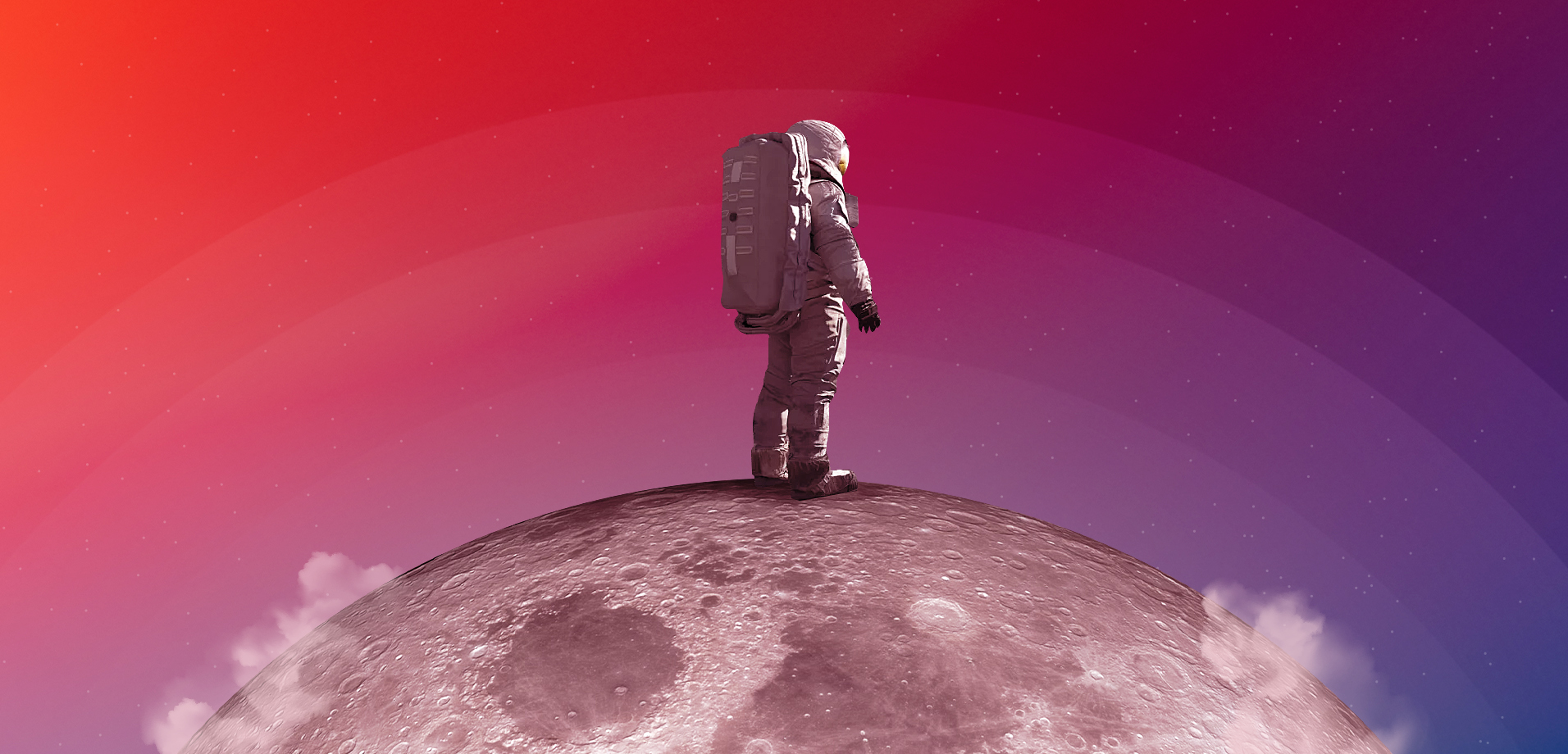
Throughout history, human development has relied upon Earth’s finite resources. And it looks like the time is coming when we may soon be facing an acute shortage of some of them. Fortunately, moon mining could be a solution. Progress in space exploration has allowed scientists to discover numerous rare and valuable minerals on the Moon. On a funny note, the only thing left is to extract these minerals out of the Moon. But let’s get serious and reflect: Will there be a lunar gold rush, and how are we going to mine Moon’s “jewels”?
А bit of history: what countries found lunar minerals?
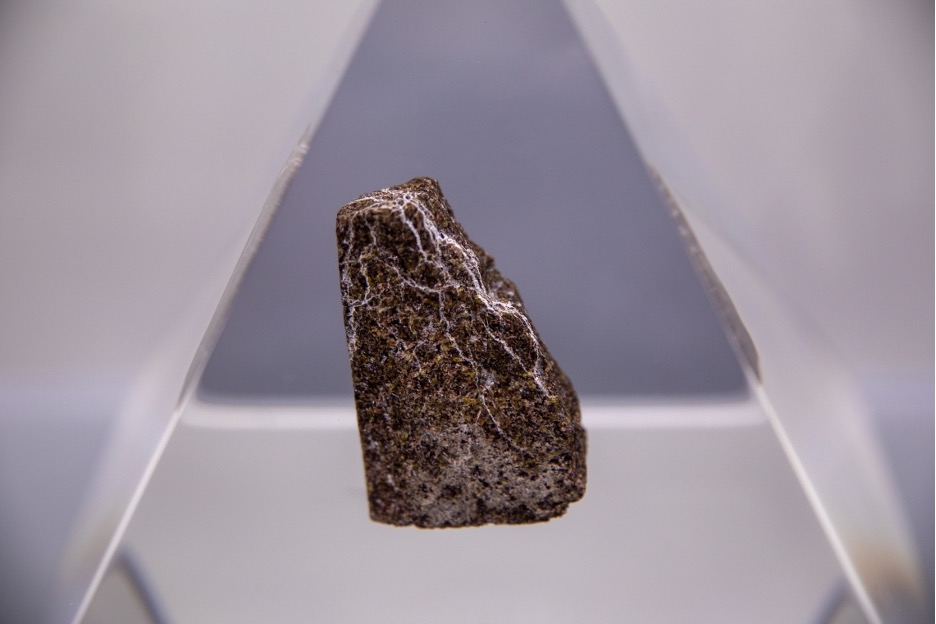
Until the 21st century, the leadership in the study of lunar minerals predictably belonged to the United States and the USSR. It was these two countries that were the first to visit the Moon and take samples of regolith (lunar soil), which significantly accelerated the research of our satellite. The Americans did it six times — in the manned Apollo missions from 1969 to 1972 (382 kg of Moon rocks were delivered). Soviets visited the Moon three times — on unmanned Luna missions from 1970 to 1976 (326 g of samples delivered).
In 1998, the American Lunar Prospector probe, using a neutron spectrometer, carried out measurements that allowed us to conclude the presence of water and KREEP elements in lunar breccias and basalts on the Moon, as well as to draw up an approximate map of their deposits.
In 2009, the Japanese Kaguya probe confirmed the presence of uranium, as well as some other useful minerals on the Moon. And in 2020, China became the third country to deliver regolith (1.7 kg) from the surface of the Moon and find a new unique mineral in it. This mineral stone was named Changesite-(Y) (in honour of the Chinese Moon Goddess Chang’e).
Are the minerals found on the Moon also found on Earth?
Yes, but scientists might have never found out about their existence on Earth if they had not first discovered these minerals in the regolith. Samples of the first rocks mined on the Moon were sent to many laboratories around the world, in which scientists were able to diagnose the presence of 20 minerals known on Earth, including ilmenite, plagioclase, pyroxene, and olivine. These data confirmed the theory that the Moon and Earth have the same origin. At the same time, three new minerals were found on the Moon, which, at the time, were not listed in the catalogues of terrestrial minerals.
Armalcolite
This mineral is named after the first letters of three Apollo 11 astronauts’ surnames — Armstrong, Aldrin, and Collins. Armalcolite was found in lunar titanium basalts. The new Moon mineral was later discovered on Earth in titanium-rich volcanic lavas and even later in carbonaceous chondrites.
Pyroxferroite
This Moon mineral’s name comes from the words pyroxene (Greek pyr — fire and xenos — alien) and Ferrum (Latin for iron). On the Moon, it is found in basalts in association with troilite, a mineral rarely found on Earth. Later, pyroxferroite was found in the Isanago mining facility in Japan and then in the USA, Sweden, and Finland.
Tranquillityite
The mineral is named after the Sea of Tranquility, where it was first found. Terrestrial samples of tranquillityite minerals were discovered in the Pilbara mining centre of Western Australia in 2011.
Thus, most of the lunar minerals were eventually found on Earth as well. The only exception is Changesite-(Y), discovered by the Chinese in 2022. But it is possible that scientists will also find traces of this mineral on Earth.
What precious minerals are on the Moon?
The samples have shown that the Moon as a whole is made up of minerals similar to those on Earth. But the main thing is that the concentration of some of those minerals significantly exceeds that on Earth, which makes our satellite very attractive for mining. We are talking about metals, including rare Earth metals (REMs), as well as helium-3 and water.
Metals that can be mined on the Moon
There are a lot of common minerals on the Moon, such as silicon (Si), iron (Fe), magnesium (Mg), calcium (Ca), aluminium (Al), manganese (Mn), titanium (Ti), platinum group metals, as well as a number of potential nuclear fuels — uranium, thorium and lithium.
Iron

Iron, with an average concentration of about 11%, is present both in the lunar seas and highlands. Moon iron mining may be too energy-intensive, but there is an alternative — mining iron dust from the Moon regolith using simple magnets. The concentration of iron in the Moon regolith is tiny (0.5%), but this is quite sufficient for the manufacture of spare parts using the additive manufacturing method.
Silicon
Silicon is distributed throughout lunar material, with a concentration level of 45%. The metal can be used in the production of solar panels, as well as glass, fibreglass, and a variety of useful ceramics.
Aluminum
Aluminium on the Moon is found in concentrations of 15–24% and is present in a mineral called anorthite (from the feldspar (plagioclase) group). It is a good electrical conductor, and atomised aluminium powder can also serve as a solid rocket fuel when burned in oxygen.
Magnesium
This metal is present in pyroxene and olivine in a concentration of about 8%. Magnesium has many uses as alloys for the aerospace, automotive and electronics industries, but magnesium mining on the Moon may be complicated by its supposed deposit in the lower layers of the lunar crust.
Titanium
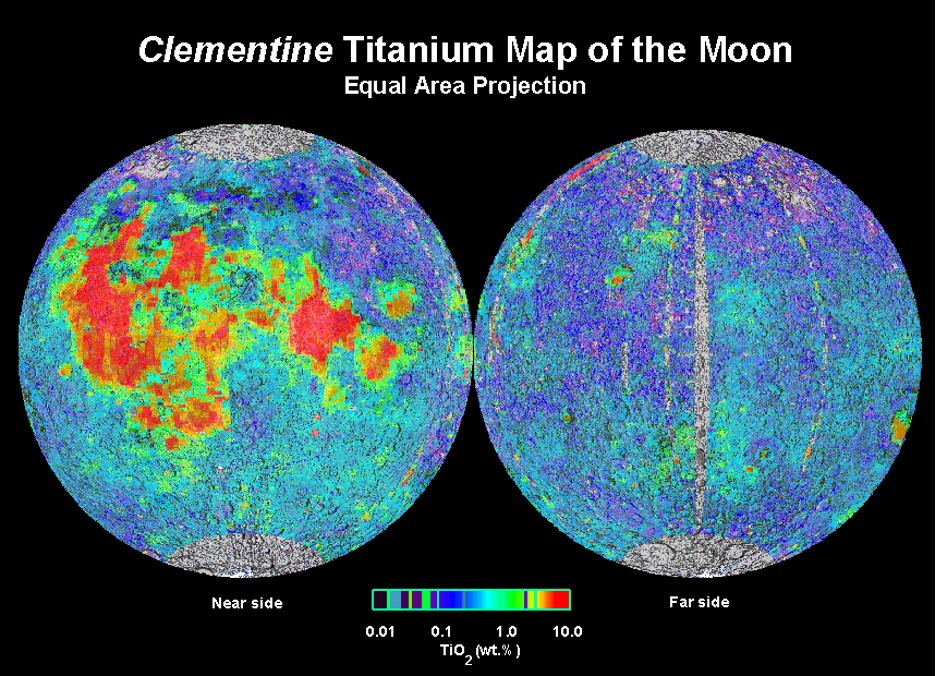
Titanium is contained in the mineral ilmenite, at a concentration of 4-5%. This is 10 times more concentrated than on Earth. Titanium can be alloyed with iron, aluminium, and other elements to produce strong, lightweight alloys for the aerospace industry.
How much lithium is on the Moon?
Lithium is present in lunar soil in an average amount of about 12.9 ppm. It may well be extracted with liquid methods, and so, most likely, its mining will be closely related to the extraction of Moon water.
Scientists believe that ∼221 million tonnes of lithium can be extracted from the surface of the Moon. Each lithium atom can generate one tritium atom, so there are potentially ∼96 million tons of tritium that could be extracted from the Moon surface.
How much uranium is on the Moon?
The average distribution of uranium on the Moon is ∼0.3 ppm and ∼1.2 ppm thorium, although at Copernicus Crater, their concentrations in KREEP elements are almost an order of magnitude higher. An analysis of recovering thorium and uranium at similar concentrations on Earth has shown that it is energy-efficient, with a return on investment of at least 400%, even using technology available in the 1950s.
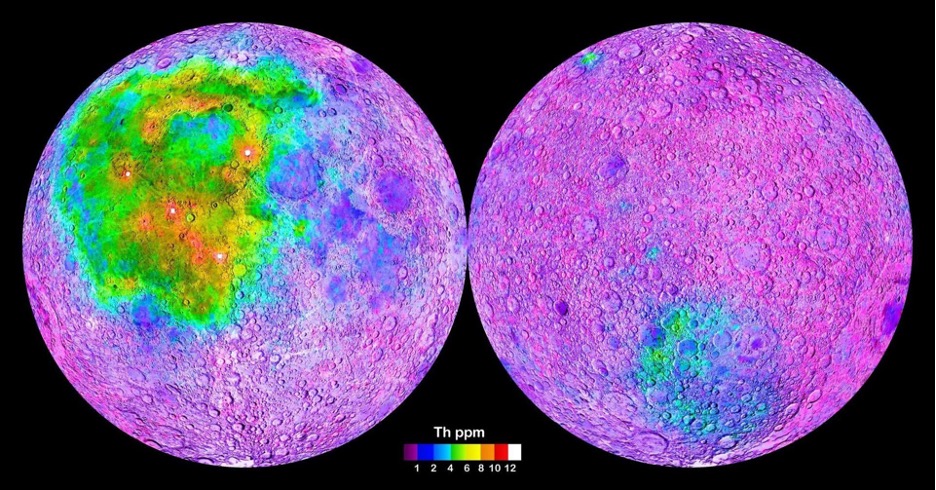
Modern technologies for mining radioactive minerals on the Moon can be much more productive, and the new mining technologies can also eliminate the need for milling Moon regolith. Thus, according to scientists, 177 million tonnes of uranium and ~690 million tons of thorium can be extracted from the Moon.
This means that under optimal conditions, lunar uranium resources can produce up to 3960 million TWh of energy, and the thorium production potential is ∼15200 million TWh. These values combined can, in the future, provide energy to the Earth for another 700 years (world energy consumption in 2020 amounted to 27,000 TWh).
Rare Earth metals (REMs)
Moon KREEP minerals also contain what we call rare Earth metals (REMs). These are scandium, yttrium and 15 types of lanthanide — lanthanum, neodymium, cerium, praseodymium, promethium, europium, samarium, terbium, gadolinium, dysprosium, holmium, thulium, erbium, lutetium, and ytterbium.
Rare Earth metals are important components of many modern electronic devices, ranging from gadgets to complex medical diagnostic equipment. They are often called “industry’s vitamins” because even small amounts of them in alloys and other compounds improve their properties.
By the way, these metals were called ‘rare earth’ not at all because they are rarely found in nature. In fact, they are quite common, but in most cases, they are available only in a dispersed state — that is, in the composition of minerals mixed with other elements. Hence the problem.
Mining REMs is a difficult and expensive procedure. These elements are mainly found in mineral ore and in very low concentrations. In addition, they react with oxygen at lightning speed, forming dense, refractory oxides. Because of this, they are extremely difficult to separate from impurities and extract in their pure form.
The lack of atmospheric oxygen on the Moon makes lunar REM mining an extremely attractive prospect. Today, over 200,000 tonnes of REMs are mined on Earth per year, with an annual value increase of approximately 10%. Although scientists suggest that the amount of rare Earth minerals prevalent on the Moon is much smaller than it is on Earth, lunar REM mining will still help meet the rapidly growing terrestrial needs.
Helium 3
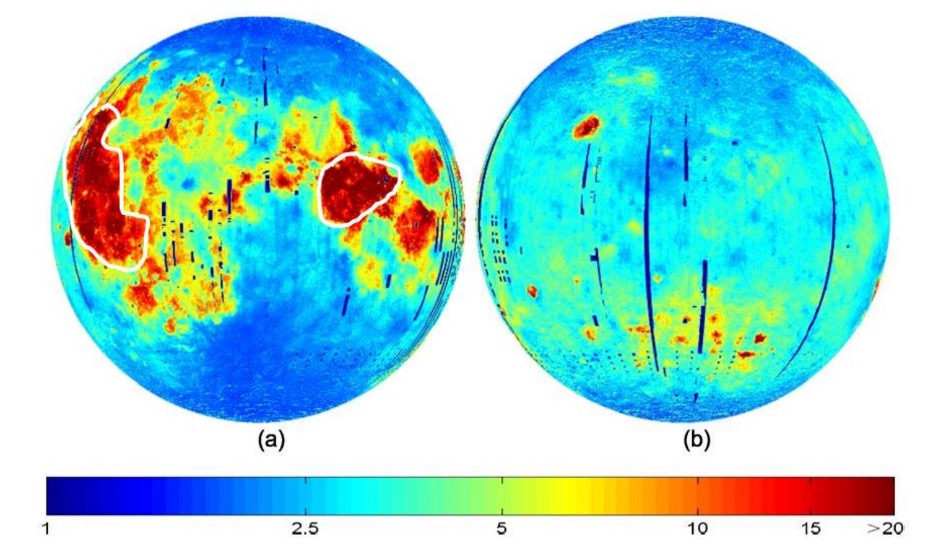
The concentration of 3He in lunar regolith: (a) visible side; (b) reverse side; the white contours in (a) cover areas of increased 3He concentration in the Ocean of Storms (left) and the Sea of Tranquility (right). Credit: thealphacentauri.net
Helium-3 is a stable isotope of helium that is a byproduct of fusion reactions in the Sun and can be used as fuel for nuclear fusion reactors. On Earth, it is practically absent; it evaporates from the atmosphere into space, but on the Moon, the absence of a magnetic field and atmosphere provided reserves of helium 3 in the amount of about 1 million tonnes.
According to the most conservative estimates, mining helium 3 on the Moon can provide the Earth with energy for one thousand years. So is there any fuel on the Moon and is it worth mining? Definitely.
Water
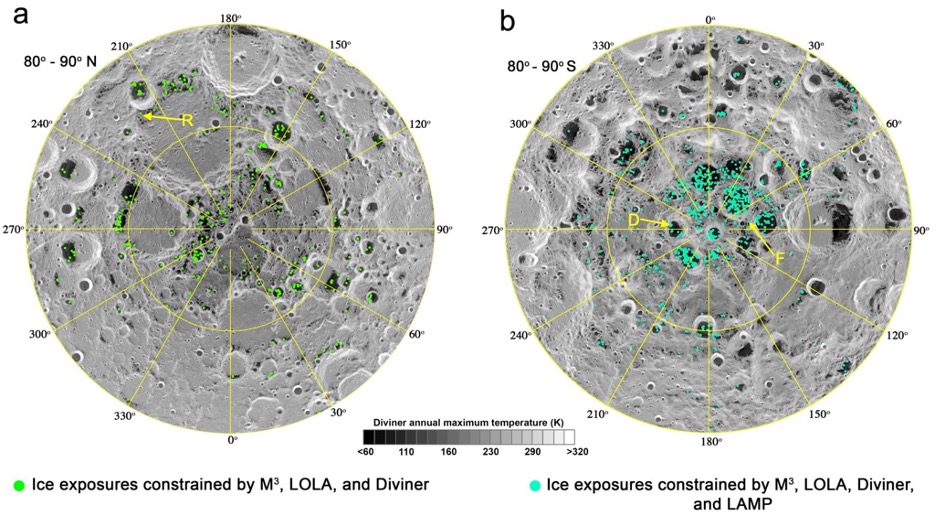
Indirect evidence of the water ice presence at the lunar poles was provided by the Lunar Prospector neutron spectrometer. This interpretation was supported by results from NASA’s Lunar Crater Observation and Sensing Satellite (LCROSS) mission, which, in 2009, entered the shadowed region of the South polar crater Cabeus and measured a water ice concentration of 5.6 ± 2.9 wt% (mass fraction of elemental matter in percentages). Given this figure and the density of the Moon regolith of 1660 kg/m3, there are potentially 2900 million tonnes of water in the upper one-metre-thick layer of regolith.
As you know, water molecules can break down into hydrogen and oxygen, both of which can later be used as rocket fuel or in metallurgical and chemical industries. Additionally, mining water on the Moon could eliminate the need to transport it from Earth to future Moon bases.
Is there any gold on the Moon?
Yep. There is gold on the Moon, too. Its traces were discovered in the lunar soil by the LCROSS mission. Although the sample size of the crater rocks was relatively small, it confirmed the presence of gold beneath the Moon regolith. 14 years have passed since this discovery, but scientists cannot yet determine the approximate amount of gold on the Moon, primarily due to its underground location. And perhaps this is for the best because if there is a lot of gold there, a real fight for such a valuable resource could begin on Earth.
What are the techniques for Moon mining?
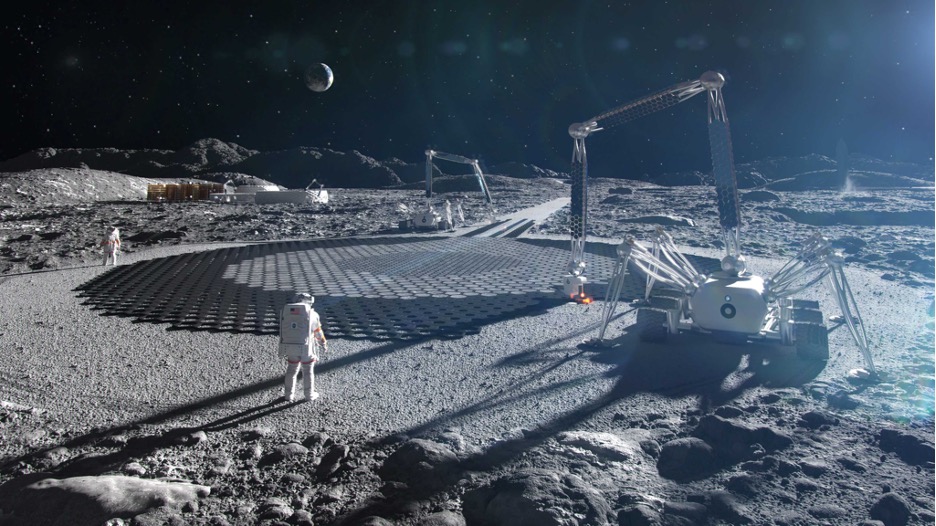
Mining on the Moon is a complex task that will require the use of high-tech methods and equipment. NASA relies on private companies, which the agency believes are better able to cope with mineral mining challenges than cumbersome government agencies. Below are some techniques and concepts that can be used to mine lunar minerals.
Manual mining
On early missions to the Moon, astronauts used simple manual tools to collect samples of lunar regolith and rocks. Note that this mineral mining method remains effective for small samples but is not suitable for mass mining of minerals on the moon.
Robots and autonomous systems
Using autonomous robots and mechanical devices could be a safe and effective way to explore and mine the Moon. Robots can be equipped with tools for drilling, sampling, and transporting ore.
Drilling and development
For mining on the Moon, specialised drilling equipment may be used. This mining equipment must be designed to cope with Moon conditions, including low gravity and vacuum.
Water extraction
Water extraction can be accomplished using specialised systems that can condense water molecules from the Moon regolith.
Thermal methods
Mining techniques based on high temperature and thermal decomposition of materials can be used to extract precious lunar minerals from rocks. For example, thermal decomposition can be used to extract oxygen from regolith.
3D printing and using on-site resources
The concept of “extraterrestrial 3D printing” involves using resources to create structures and equipment on the Moon. This could include using Moon regolith to 3D print habitable and operational modules.
These Moon resource mining techniques continue to be developed and explored through various missions such as NASA Artemis, ISRO Chandrayaan, Roscosmos Luna, and others.
Dangers of Mining the Moon
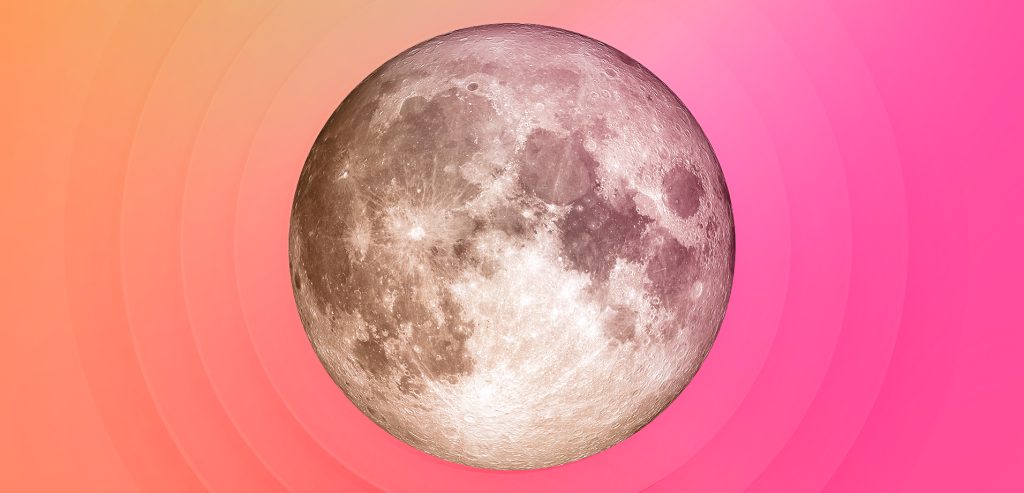
Although Moon mining could solve the problem of mineral resource shortages on Earth, some consider it a bad idea or rather a sort of pie in the sky. Indeed, it is still too soon to talk about mining and using lunar minerals in large quantities. First, we need to eliminate potential mining risks and challenges, and there are many of them.
Environmental consequences
Mining on the Moon may have negative environmental consequences, such as disturbance of the natural landscape and destruction of the local ecosystem. This could affect the preservation of the Moon’s natural environment and its impact on Earth.
Astronaut safety
Astronauts working and mining on the Moon will be exposed to various hazards, such as solar radiation, meteorite impacts, and the inability to quickly return to Earth if necessary.
Space debris problem
Moon mining will be accompanied by a large amount of garbage in the form of mining waste, as well as worn-out and broken mineral mining equipment. All this can be thrown into space, which is already choked by the huge amount of satellite debris drifting in Earth’s orbit.
Legal matters
International law prohibits countries from carving up the moon and claiming its territory as their own, and enforcing these treaties can cause legal disputes. Issues of ownership and liability will be complex and perhaps irreconcilable.
Geopolitical conflicts
The pursuit of Moon resources by various nations and corporations may cause geopolitical tensions and conflicts, especially regarding mineral resource mining and ownership.
Technical challenges
Delivering equipment and materials to mine and transport lunar resources to the Moon is a challenging task. It requires the development and creation of new technologies, which will be expensive.
Profitability
Countries may find some Moon mineral mining projects unprofitable. Simply put, it may turn out that the game is not worth the candle since income from the sale of Moon mineral resources does not cover the costs of their mining and extraction.
What is happening now and what are future prospects?
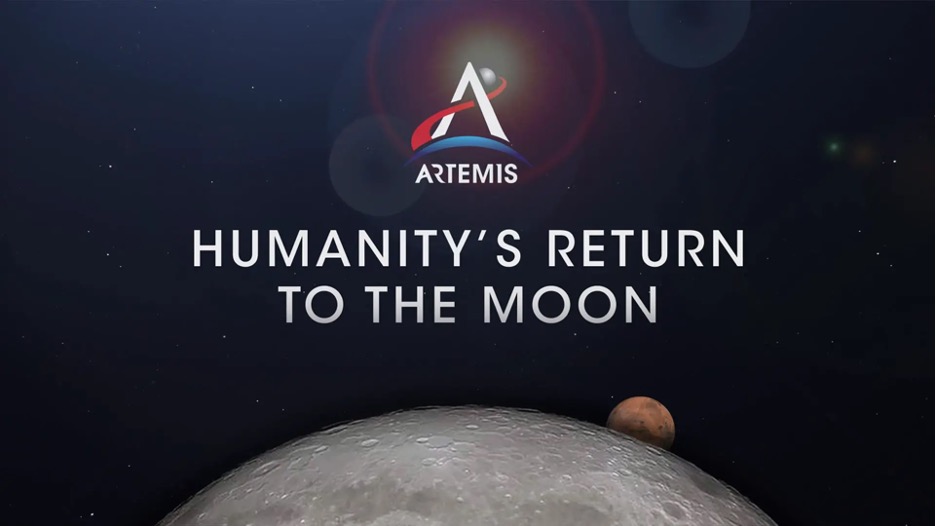
In the autumn of 2020, NASA proposed the Artemis Accords, which were informally dubbed the “Space Constitution.” The Regulations formulate general principles and rules of behaviour in space and are advisory in nature.
The Artemis Accords include the following provisions:
- No weapons. Space exploration should be carried out exclusively for peaceful purposes.
- Transparency. Countries are obliged to fully inform each other and the entire international community about their activities in space, both current and planned.
- Technological compatibility. Countries are advised to adhere to uniform standards when building space equipment so that systems are compatible with each other (and, if necessary, interchangeable).
- Mutual assistance. In the event of any accident, countries undertake to provide each other with any possible assistance to save people.
- General register. Registering all objects ever launched into space in a single register will prevent the potential danger of their collision.
- Protection of historical heritage. Countries undertake to protect sites of historical value (such as the site where the first astronauts landed on the Moon) from damage.
- Collective ownership and responsibility. No country or space mining company has the exclusive right for mining on the Moon; Participants in the Artemis program are jointly responsible for mineral extraction.
- No conflicts. All countries undertake to respect each other’s interests and coordinate the nature and sites of any operations in advance.
- Space debris removal. Implies a unified plan for the disposal of any research by-products, including expired spacecraft and stations.
The agreement was signed by ten countries (Australia, Great Britain, Italy, Canada, Luxembourg, UAE, USA, Japan, Brazil, and Ukraine). Russia, NASA’s partner on the ISS, flatly refused the proposed alliance, stating that it did not intend to play second fiddle in the exploration of the Moon. Roscosmos reported that they would mine minerals on the Moon together with China.
So, as we can see, the global lunar consensus has failed and the tension between the space powers will probably increase in the next years. This means that the Moon race has already begun and we are waiting for an exciting and tense show, with a plot that is difficult to predict.
Sources:
- https://www.universetoday.com/20494/moon-mining1/
- https://www.frontiersin.org/articles/10.3389/feart.2023.1190825/full
- https://euromin.w3sites.net/Nouveau_site/gisements/extra/GISEXTe.htm
- https://www.edinformatics.com/math_science/what-is-helium-3.html
- https://starlust.org/is-there-gold-on-the-moon/
- https://www.nasa.gov/specials/artemis-accords/index.html
- https://www.sciencedirect.com/topics/earth-and-planetary-sciences/lunar-resource

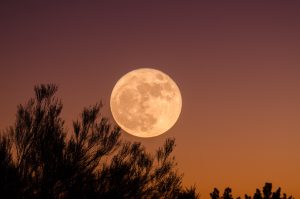
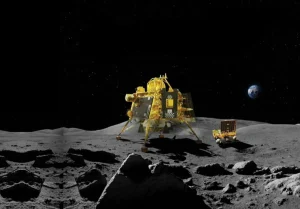

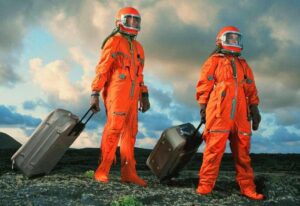

Thank you for your comment! It will be visible on the site after moderation.